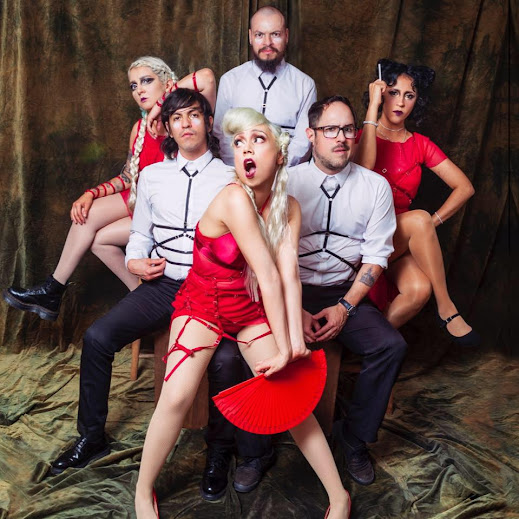#Halestorm #hard rock #heavy metal #alternative metal #post-grunge #Beatles cover
Lzzy Hale’s voice is immense. There is no other way to put it, she really does set the bar high and then vaults it with every performance. Halestorm are a fantastic live band, and great on record. They released their self-titled debut album around 18 months ago and it is well worth a look, however this review is about something more recent. After a live CD/DVD late last year, Halestorm have released ReAniMate: The Covers EP. Six tracks which I can only assume are songs the band loved over the years, and surprisingly it’s six tracks which are very diverse and Halestorm make their own.
The final track on this EP is by The Beatles. Like other tracks here, it’s a lesser known cut by the band and it’s a very clever choice. Halestorm have taken Abbey Road’s ‘I Want You (She’s So Heavy)’ and, like the standard set by Motley Crue’s cover of ‘Helter Skelter’, they have very much made it their own. What the band have done here is show us just how ingenious The Beatles were; how ahead of their time and how cross-genre their songwriting was. This is a really strong, heavy and frankly ubiquitous rock song. Lzzy Hale’s vocal is shown off at it’s absolutely best here, reminiscent of the powerhouse live experience. The support from the band is stellar (as in fairness it is throughout the EP) and should make them proud. A future live-staple if ever there deserved to be one. From: https://www.musicscramble.co.uk/2011/03/24/halestorm-reanimate-the-covers-ep-2011/
Lyric writing was one of The Beatles' greatest strengths. John and Paul, especially, developed a knack for conveying a story that the average listener could easily relate to, many times within only a three minute framework. Witness “Yesterday” in which Paul simplistically expresses the immense heartbreak of abandonment, something almost everyone on the planet has experienced at one time or another. In “Help!,” John vividly relates the need for emotional support because of the uncertainty of life that we experience as we age. Even “I Am The Walrus” achieves greatness in its use of absurd wordplay purposely woven to confound listeners who look for deep meaning in their lyrics, these lyrics being sung convincingly as if there were indeed a mystery here to unravel when there really wasn't any.
Then, in 1969, John experiments with writing lyrics that convey deep emotion using hardly any words at all. Could this be done? In “I Want You (She's So Heavy),” a track that approaches eight minutes in length and is the longest song in the entire Beatles catalog (“Revolution 9” is nearly half a minute longer, but can arguably be viewed as more of a “sound collage” than an actual song), John tells a desperate story of his deep emotional feelings for his new love Yoko Ono using a total of only fifteen words!
To Rolling Stone magazine, John stated: “Simplicity is evident in 'She's So Heavy.' In fact a reviewer wrote: 'He seems to have lost his talent for lyrics; it's so simple and boring.' When it gets down to it, when you're drowning, you don't say, 'I would be incredibly pleased if someone would have the foresight to notice me drowning and come and help me,' you just scream! In 'She's So Heavy,' I just sang, 'I want you, I want you so bad, she's so heavy, I want you,' like that” He has even stated his wish to compose a “perfect song” using only one word, not unlike Yoko's published poem of 1964 which consisted of only one word: 'Water.'
From: http://www.beatlesebooks.com/i-want-you
















